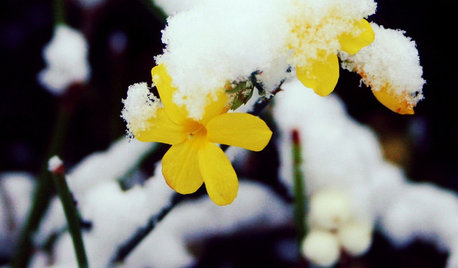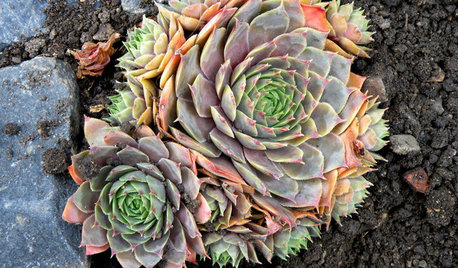how much perlite?
Lamora
12 years ago
Related Stories

FARM YOUR YARDHow to Grow Vegetables in Containers
Get glorious vegetables and fruits on your patio with a pro’s guidance — including his personal recipe for potting mix
Full Story
YELLOW FLOWERSGreat Design Plant: Winter Jasmine Gladdens Snowy Gardens
Sunny yellow flowers defy the frost, bringing cheer to the garden on gray days
Full Story
REMODELING GUIDESCool Your House (and Costs) With the Right Insulation
Insulation offers one of the best paybacks on your investment in your house. Here are some types to discuss with your contractor
Full Story
GARDENING GUIDESCommon Myths That May Be Hurting Your Garden
Discover the truth about fertilizer, soil, staking and more to keep your plants healthy and happy
Full Story
GARDENING GUIDESGreat Design Plant: Hens-and-Chicks
Plant Sempervivum succulents for fuss-free garden color and character all year
Full Story
FUN HOUZZDon’t Be a Stickybeak — and Other Home-Related Lingo From Abroad
Need to hire a contractor or buy a certain piece of furniture in the U.K. or Australia? Keep this guide at hand
Full Story
HOUSEPLANTSPlay Up Some Fiddleleaf Figs for a Lively Indoor Tune
Strike a dramatic chord in a minimalist scene or a country note in a rustic setting — fiddleleaf fig plants harmonize with any style
Full Story
LIFEBack to the Future of the House
Can the low-tech dwellings of the past offer design lessons for homes to come? A palace curator and book author says yes
Full Story
HOUSEPLANTSGet a Dash of the Rain Forest With Madagascar Dragon Tree
This living decoration reaches up to 15 feet, has minimal needs and adapts to different light levels — just steer clear of fluoride
Full Story
CONTAINER GARDENSContainer Gardening Basics: The Dirt on Soil
Learn the types of potting soil available and the best mixes to help your containers thrive
Full Story







greenman28 NorCal 7b/8a
birdsnblooms
Related Professionals
New Bedford Landscape Architects & Landscape Designers · Windham Landscape Architects & Landscape Designers · Richmond Heights Landscape Architects & Landscape Designers · Alpharetta Landscape Contractors · Battle Ground Landscape Contractors · Bowie Landscape Contractors · Fort Hunt Landscape Contractors · Gresham Landscape Contractors · Miller Place Landscape Contractors · Oak Forest Landscape Contractors · Pueblo West Landscape Contractors · Shaker Heights Landscape Contractors · Vermilion Landscape Contractors · East Hanover Interior Designers & Decorators · Linton Hall Interior Designers & DecoratorsLamoraOriginal Author
pirate_girl
tapla (mid-Michigan, USDA z5b-6a)
greenman28 NorCal 7b/8a
Ren_Flowers
tapla (mid-Michigan, USDA z5b-6a)
Enterotoxigenic00
LamoraOriginal Author
tapla (mid-Michigan, USDA z5b-6a)
Enterotoxigenic00
pirate_girl
rhizo_1 (North AL) zone 7
LamoraOriginal Author
Enterotoxigenic00